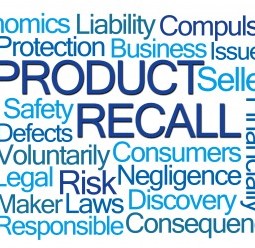What is Talcum Powder?
In 1999, the American Cancer Society advised women not use talc-based powder products like Johnson & Johnson’s baby powder on genital areas because talcum powder has been shown to cause ovarian cancer. However, this was not the first time the link between talcum powder and ovarian cancer was known to Johnson & Johnson.
Talcum Powder Use
For decades, women have been using talc-based powder on their private parts or on undergarments and sanitary pads to keep their groin areas dry, to avoid foul odors, and to reduce chafing.
J&J’s Failure to Warn
Internal documents from 1997 have shown that a paid consultant for J&J warned the company of the increased risk of ovarian cancer resulting from the use of its talcum powder products, but the company ignored the report. J&J has used talcum powder in its beauty products for decades, and despite knowing the risks, continued to market their talcum powder products without adequately warning consumers.
Because of J&J’s failure to warn, thousands of women across the country have developed ovarian cancer after using talcum powder products like baby powder, and while J&J is trying to deny liability and argue against scientific evidence, thousands of women are fighting to hold the pharmaceutical giant responsible in a mass tort lawsuit.
Legal Action Against J&J
The first lawsuit against J&J for failing to warn of the risks of talcum powder and ovarian cancer came in 2013. In that case, cancerous tissue was removed from a woman who used J&J baby powder products for over three decades, and it was shown to contain talc particles.
While studies linking talcum powder and ovarian cancer go as far back as 1971, this first legal case against J&J paved the way for further legal action because the jury found J&J negligent in failing to warn consumers.
2016 has already proven to be a monumental year for baby powder ovarian cancer victims – two separate juries have found J&J guilty and awarded damages to the victims. This first trial, which concluded in February 2016, awarded the victim $72 million. The second trial concluded in May 2016, and the jury awarded $55 million to the victim in damages.
These recent substantial trial verdicts give ovarian cancer victims hope that J&J can be held responsible for its negligence. With over 3,500 lawsuits currently pending, the company will soon have to answer for its wrongdoing to those affected.
Frequently Asked Questions
Frequently Asked Questions
In the United States, a tort refers to a, “body of rights, obligations, and remedies that is applied by courts in civil proceedings to provide relief for persons who have suffered harm from the wrongful acts of others.”
What is MDL?
An MDL stands for multidistrict litigation and is a special legal procedure conducted in federal court that is designed to quickly conduct the handling of complex cases, which can include dangerous drug and medical device lawsuits.
Product Defects
It means the manufacturer made an error either in the design or the fabrication of a product that causes it to not work as intended. This can be especially dangerous in many cases, such as those of faulty medical devices and prescription drugs.
Defective Design
A defective design in a product is one that is so great, the product cannot be utilized for the purposes intended or is even made hazardous as a result of the defect, imperfection, or design flaw. In the case of medical devices, this can be a deadly mistake.




